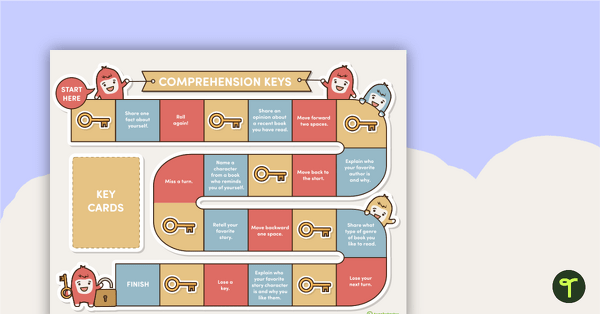Main Idea Teaching Resources
Teaching students to find the main idea of a story, article or other text? Explore printable main idea worksheets, graphic organizers and more teaching resources created by teachers for teachers like you!
This collection of English Language Arts resources is aligned with the Common Core, and each resource has undergone a careful review by a member of the expert Teach Starter teaching team to ensure it's ready for your classroom — and your lesson plans!
You'll find editable versions to easily differentiate your instruction for individual students, plus a variety of options to plan lessons to help your students find the main idea of a text and engage with a story or piece of nonfiction on a deeper level.
New to teaching this portion of the English curriculum or just looking for fresh and engaging ways to teach this reading comprehension strategy? Read on for a primer from our teacher team!
What Is a Main Idea? A Kid-Friendly Definition
Sure, you know what the main idea is, but how are you introducing it to your students? Let's start off with a kid-friendly main idea definition from our teacher team!
The main idea of a story refers to its central message or idea. This is the primary concept or lesson that the author you to understand when you are reading a text.
You could consider the main idea to be the key point around which the entire story, passage or text revolves.
How to Find the Main Idea of a Story or Other Text
Now that they have a basic understanding of what the main idea is, how do you teach students how to find it? This is quite a bit harder, but bear with us!
Whether they're reading a fiction text or something more informational, finding the main idea as a reader really comes down to five basic things.
- Read the text attentively — The first, and likely most important thing, is for students to really engage with the text by reading it carefully, paying attention to the characters, plot, and events.
- Identify key details — Students should look for important details and events that stand out and contribute to the overall story.
- Evaluate supporting details — Supporting details are specific pieces of information, evidence, examples or explanations that reinforce or substantiate the main idea. Identifying and examining the supporting details and events within the story to see how they connect to and reinforce the main idea is part of finding the main idea! Students will need to consider how the characters, conflicts and resolutions contribute to the central message or theme.
- Consider what the author wants you to know — Ask yourself, "What is the author trying to teach or tell the reader through this story?" or "What point is the author making?"
- Look for the central message in key sections of the text — If students are reading an article or other non-fiction passage, the main idea may be easier to find than it is in a piece of fiction. It's often stated at the beginning of the text or beginning of a paragraph within the text, and it also often appears in the concluding paragraph or sentences of a text.
How Do You Separate Main Idea and Supporting Details?
We've established what a main idea is and what a supporting detail is, but how can students separate the two in their reading?
Here are a few suggestions from our teacher team that you might want to share with your students.
- Look for General vs. Specific Information — The main idea of a text tends to be a more general statement than those details. The main idea encompasses the broader topic or theme of the text while the supporting details are specific pieces of information that contribute to that broader main idea.
- Consider Importance and Repetition — Writers usually emphasize the main idea throughout the text, and students may notice that this central message is repeated in different words or forms. Supporting details, on the other hand, are usually mentioned only once or a few times to provide additional information or evidence.
- Analyze the Structure of the Text — Students should carefully examine the organization and structure of the text. The main idea is often found in the topic sentence of a paragraph or the thesis statement of an essay. Supporting details typically appear in subsequent sentences or paragraphs that elaborate on — or provide evidence for — the main idea.
- Use Critical Thinking — This is what we are working toward with our students, after all! It's important for readers to apply critical thinking skills to evaluate the relevance and significance of each piece of information in a reading passage. Encourage your students to consider how each detail contributes to the overall understanding and support of the main idea. If a detail seems unrelated or not very important, it may not be a supporting detail but rather a different concept or subtopic.
